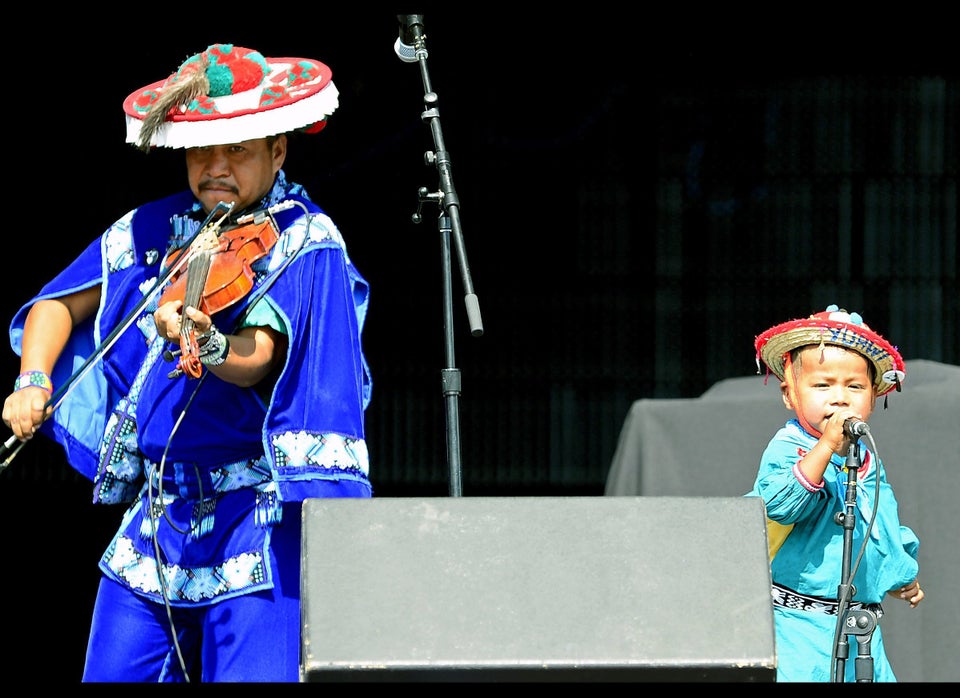
Last week the Oxnard School District, located in Oxnard city in Southern California, banned the use of the term ‘Oaxaquita’, the LA Times reported. ‘Oaxaquita’ is a derogatory term used to refer to indigenous people from Mexico’s Oaxaca state.
Oxnard, located 60 miles northwest of Los Angeles, is the most populous city in Ventura County and it is home to a large community of Mexican farm workers.
73.5 percent of the population in Oxnard is of Hispanic or Latino origin and estimates suggest 30 percent of all farm workers in California are indigenous Mexicans, according to the LA Times. Many of them are Mixtec--indigenous people from the Mexican state of Oaxaca.
Prior to banning the use of “Oaxaquita” in the School District, indigenous leaders of the Ventura County had launched the “No Me Llames Oaxaquita!” (“Don’t call me little Oaxacan!”) campaign on May 17th in an effort to stop bullying against indigenous Mexican children and farm workers. The campaign aimed to persuade local school districts to prohibit the words "Oaxaquita" and "indito" (little Indian) from being used in school grounds. It also hoped to encourage indigenous pride.
But the anti-indigenous discrimination of Mixtecs in the U.S. has origins in Mexico. The term ‘Oaxaquita’, generally used by Mexicans immigrants to refer to their fellow countrymen, highlights racial tensions among Latinos.
“Here I have not felt discrimination,” said Silvia Rojas, a Mexican agricultural laborer originally from Juxtlahuaca, Oaxaca, México who works in California, in Spanish to HuffPost Voces. “But I remember that in Mexico City I was insulted for being indigenous.”
High numbers of migration from all parts of Mexico still makes discrimination against indigenous Mexicans a palpable reality in the U.S.
"Mixtecs who work in the fields are insulted by their contractors who are for the most part Mexicans," according to Eduardo Stanley reporter for HuffPost Voces who’s covered extensively the indigenous population in California. "It's an ongoing, permanent thing. If you talk to some people, they refer to indigenous Mexicans as 'los morenitos.' It's part of their every day language." The term loosely translates to "little dark-skinned" people.
The discrimination of indigenous people is in big part related to the discrepancy in native tongues.
While Spanish remains to be the most widely spoken language in Mexico, the state of Oaxaca has 16 different indigenous languages, according a paper by University of California, San Diego. The two most commonly spoken ones are Zapotec and Mixteco.
The Mixtec language is positioned as inferior not only to Spanish, but also to English, as in the case of Mixteco in the U.S.
Often times the discrimination of indigenous people concludes in the censorship of their own language. Oaxacans feel repressed and as such they choose not to speak their own native tongue in certain situations, according to Stanley.
In California, the indigenous workers of Ventura County and students of the Oxnard School District have reported being bullied by other Mexican immigrant classmates who are not indigenous for their indigenous appearance and for speaking Mixteco.
The racial tension seems to challenge the pan-ethnic label used to identify Latinos.
"We forget that it's a multilingual, multiethnic community," said Gaspar Rivera-Salgado, a researcher at the UCLA Labor Center who’s written about Mexican indigenous migration and the Mexican community in the U.S. to the LA Times. "We forget about the fact that 62 indigenous languages are spoken in Mexico."
Stanley argues there's a positive outcome of this discrimination. Mexican indigenous children who come to the U.S. as a young age see the importance in learning and communicating in the country's language. Mixtec children are often time trilingual speaking their native tongue, Spanish and English fluently.
